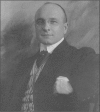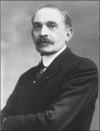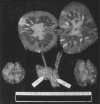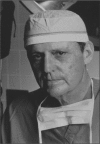A brief history of cross-species organ transplantation
- PMID: 22275786
- PMCID: PMC3246856
- DOI: 10.1080/08998280.2012.11928783
A brief history of cross-species organ transplantation
Abstract
Cross-species transplantation (xenotransplantation) offers the prospect of an unlimited supply of organs and cells for clinical transplantation, thus resolving the critical shortage of human tissues that currently prohibits a majority of patients on the waiting list from receiving transplants. Between the 17th and 20th centuries, blood was transfused from various animal species into patients with a variety of pathological conditions. Skin grafts were carried out in the 19th century from a variety of animals, with frogs being the most popular. In the 1920s, Voronoff advocated the transplantation of slices of chimpanzee testis into aged men whose "zest for life" was deteriorating, believing that the hormones produced by the testis would rejuvenate his patients. Following the pioneering surgical work of Carrel, who developed the technique of blood vessel anastomosis, numerous attempts at nonhuman primate organ transplantation in patients were carried out in the 20th century. In 1963-1964, when human organs were not available and chronic dialysis was not yet in use, Reemtsma transplanted chimpanzee kidneys into 13 patients, one of whom returned to work for almost 9 months before suddenly dying from what was believed to be an electrolyte disturbance. The first heart transplant in a human ever performed was by Hardy in 1964, using a chimpanzee heart, but the patient died within 2 hours. Starzl carried out the first chimpanzee-to-human liver transplantation in 1966; in 1992, he obtained patient survival for 70 days following a baboon liver transplant. With the advent of genetic engineering and cloning technologies, pigs are currently available with a number of different manipulations that protect their tissues from the human immune response, resulting in increasing pig graft survival in nonhuman primate models. Genetically modified pigs offer hope of a limitless supply of organs and cells for those in need of a transplant.
Figures










Similar articles
-
A brief history of clinical xenotransplantation.Int J Surg. 2015 Nov;23(Pt B):205-210. doi: 10.1016/j.ijsu.2015.06.060. Epub 2015 Jun 26. Int J Surg. 2015. PMID: 26118617 Free PMC article. Review.
-
Voronoff to virion: 1920s testis transplantation and AIDS.Xenotransplantation. 2012 Nov-Dec;19(6):337-41. doi: 10.1111/xen.12004. Epub 2012 Oct 25. Xenotransplantation. 2012. PMID: 23094667
-
The 2021 IXA Keith Reemtsma Lecture: Moving xenotransplantation to the clinic.Xenotransplantation. 2022 Mar;29(2):e12723. doi: 10.1111/xen.12723. Epub 2021 Dec 29. Xenotransplantation. 2022. PMID: 34967057 Free PMC article. Review.
-
Early clinical xenotransplantation experiences-An interview with Thomas E. Starzl, MD, PhD.Xenotransplantation. 2017 Mar;24(2):10.1111/xen.12306. doi: 10.1111/xen.12306. Xenotransplantation. 2017. PMID: 28421681 Free PMC article. Review.
-
Xenotransplantation of solid organs in the pig-to-primate model.Transpl Immunol. 2009 Jun;21(2):87-92. doi: 10.1016/j.trim.2008.10.005. Epub 2008 Oct 26. Transpl Immunol. 2009. PMID: 18955143 Review.
Cited by
-
Narrative Review of the Safety of Using Pigs for Xenotransplantation: Characteristics and Diagnostic Methods of Vertical Transmissible Viruses.Biomedicines. 2024 May 26;12(6):1181. doi: 10.3390/biomedicines12061181. Biomedicines. 2024. PMID: 38927388 Free PMC article. Review.
-
Pig Liver Xenotransplantation: A Review of Progress Toward the Clinic.Transplantation. 2016 Oct;100(10):2039-47. doi: 10.1097/TP.0000000000001319. Transplantation. 2016. PMID: 27428714 Free PMC article. Review.
-
The Effect of Sertoli Cells on Xenotransplantation and Allotransplantation of Ventral Mesencephalic Tissue in a Rat Model of Parkinson's Disease.Cells. 2019 Nov 11;8(11):1420. doi: 10.3390/cells8111420. Cells. 2019. PMID: 31718058 Free PMC article.
-
From waste to wealth: Repurposing slaughterhouse waste for xenotransplantation.Front Bioeng Biotechnol. 2023 Feb 3;11:1091554. doi: 10.3389/fbioe.2023.1091554. eCollection 2023. Front Bioeng Biotechnol. 2023. PMID: 36815880 Free PMC article.
-
The Relationship between Embryonic Development and the Efficiency of Target Mutations in Porcine Endogenous Retroviruses (PERVs) Pol Genes in Porcine Embryos.Animals (Basel). 2019 Aug 22;9(9):593. doi: 10.3390/ani9090593. Animals (Basel). 2019. PMID: 31443357 Free PMC article.
References
-
- Cooper DKC, Lanza RP. Xeno—The Promise of Transplanting Animal Organs into Humans. New York: Oxford University Press; 2000. pp. 1–274.
-
- Ekser B, Ezzelarab M, Hara H, van der Windt DJ, Wijkstrom M, Bottino R, Trucco M, Cooper DKC. Clinical xenotransplantation—the next great medical revolution? Lancet, in press. - PubMed
-
- Deschamps JY, Roux FA, Saï P, Gouin E. History of xenotransplantation. Xenotransplantation. 2005;12(2):91–109. - PubMed
-
- Reemtsma K. Xenotransplantation—a brief history of clinical experience: 1900–1965. In: Cooper DKC, Kemp E, Reemtsma K, White DJG, editors. Xenotransplantation: The Transplantation of Organs and Tissues Between Species. 1st ed. Heidelberg: Springer; 1991. pp. 9–22.
LinkOut - more resources
Full Text Sources
Other Literature Sources
